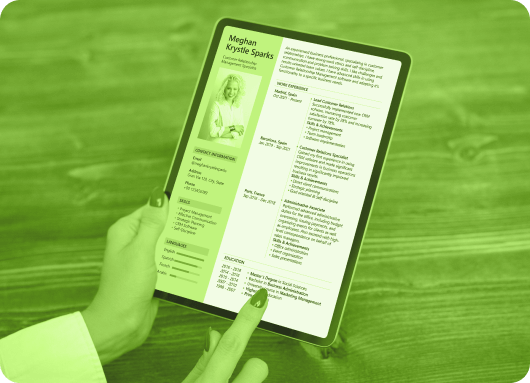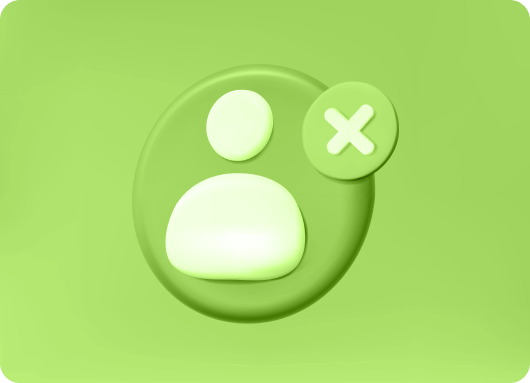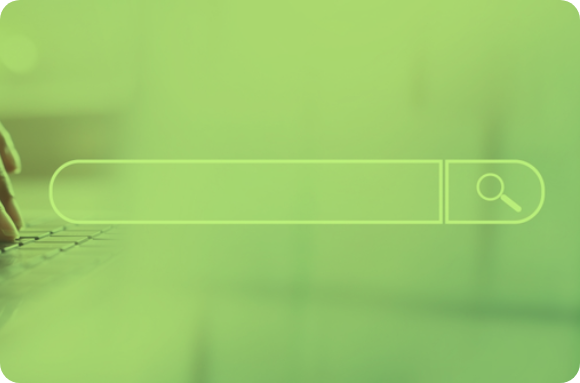[caption id="attachment_3205" align="aligncenter" width="900"] How To Change Your Resume On LinkedIn[/caption]
How To Change Your Resume On LinkedIn[/caption]
Resume on LinkedIn
We get. A resume that is a few years (or few jobs) old may make you feel sloppy to your potential employers. So it's okay to want to know how to change resume on LinkedIn. LinkedIn is more than just a professional networking site, it can also come in handy in helping you secure your dream job. With thousands of job vacancies available on LinkedIn, it is obvious that recruiters use the platform for headhunting qualified candidates. But one easy way to catch the interest of potential employers on the platform is to have a profile that is complemented with a professional photo and an up-to-date resume. If there have been some changes in your career history or skillset recently, you might need to update your resume. Here are simple methods showing how to change resume on LinkedIn.
How to Change Resume on LinkedIn
Your resume should put your best self – professionally before your potential or future employers. So changing it would be a wise decision if you have made some career advancements in recent years. You can also change your resume if you think the existing one on your account is not well-written. However, to change your resume on LinkedIn, you will have to delete the old one and then upload the latest version. Follow the steps below to delete your old resume.
- Log in to your LinkedIn account and click the Me icon on the navigation bar.
- A drop-down menu will appear, just below your profile photo. Then click on View Profile.
- Your profile page will come up. Then click the pencil icon just below your profile header to be able to make some changes.
- The Edit Intro pop-up window will come up. Then scroll to the bottom of the page to find your old resume file. Once you find it, click on it.
- Another pop-up window will appear with options to edit the title and description of the file or delete it. Choose the Delete this media option.
Good job! You have just deleted your outdated resume, and you can now go ahead to upload the updated version. Uploading a resume to your LinkedIn profile after the recent LinkedIn redesign is not difficult at all – and you can do that using different means. Keep reading to see the different ways you can upload your resume to LinkedIn without stress.
How to Upload Resume to LinkedIn
There are three ways to go about this after the recent LinkedIn redesign. You can:
- Add it to your profile as featured media
- Upload it for general job application
- Upload to LinkedIn using the “Easy Apply” function
Nevertheless, you can also turn your LinkedIn profile into a resume PDF if you think your profile is up to date. It is a much convenient option when you need a resume fast. So let’s see how to go about each of these options so you can choose the one that suits you the most.
#1: How to Upload Your Resume to LinkedIn as “Featured Media”
The platform allows users to add articles, files, or links to their profiles. If you want potential employers to have access to your resume when they land on your LinkedIn profile, you should upload the resume under your name and headline as “Featured Media.” To do that, here are the steps to follow:
- Log in to your LinkedIn account and go to your profile
- Click the “Add profile section” button to expand the “Featured” tab
- Select “Media” and choose the latest resume file from your computer
- Select “Open”
- Then click Save to have the resume featured on your LinkedIn profile
Although you can upload your resume on your LinkedIn profile, we don’t usually recommend that for a couple of reasons. First, it can make your resume available for anyone on LinkedIn to view and download your resume (depending on your privacy settings). Since you will be having your information, including your name and address on it, you will want to be extra careful when making that available to the public. Another reason is that you will lose control over such a resume. Potential recruiters may download your resume from your profile before you get the chance to update it. And since they now have everything on their table, it is just one more reason to dismiss you without even contacting you for further information. Also, having your resume uploaded to your profile means you won’t be able to send a resume tailored to the requirement of the role you are looking to apply to. That is another way to lose out on most job openings and opportunities you would have made the most of. Lastly, LinkedIn already shows your work history. Potential employers can see it by looking at your profile. Providing an additional file is not needed.
#2: How to Upload Resume Using the General Job Application Method
This option provides a more secure way of having your resume on your LinkedIn profile. You only need to change your settings to store versions of your resume on LinkedIn, making them handy any time you need one. Resume you upload this way are not visible on your public profile, and so cannot be accessed by just anyone. To upload your resume to LinkedIn using this option, here are the steps to follow:
- Log in to your LinkedIn account and click the Me icon on the navigation bar
- Then, click “Settings and Privacy”
- On the “Job seeking preference” menu, choose “Job application settings”.
- Turn on the “Save resumes and answers” button
- Click “Upload” under “Default resumes” and select the updated version of your resume to upload it.
#3: How to Upload Your Resume to LinkedIn Using “Easy Apply”
This is the best way to add your resume to LinkedIn. It requires you to upload your updated resume each time you apply for a job using LinkedIn’s “Easy Apply” function. Using this method also means you will be sending updated and tailor-made resumes each time you apply for a job. That will definitely increase your chance of getting shortlisted for the role you are applying for. To upload your resume using the “Easy Apply” function, follow the steps below:
- Log in to your LinkedIn account
- On the navigation bar, click on the “Job” icon to search for a job
- Find a job listing that has the “Easy Apply” icon on it.
- Once you find one, click on the job for more information.
- Then click the “Easy Apply” button and complete the required fields
- Select “Upload Resume” to add a resume file
- Then, click “Submit Application.”
This option will store your most recent resumes, and you can always go back to any of them, update it and use them to target different jobs.
How to Download Your LinkedIn Profile as a PDF Resume
This is another option you might want to consider when it comes to your resume on LinkedIn. It proves to be the quickest way to create your resume. It will only take a few clicks to convert your entire LinkedIn profile into a PDF and use it as your resume. However, before you can use this option, it is recommended that you be the type that regularly updates your profile. Let’s see some steps to follow to download your profile as a PDF resume:
- Log in to your LinkedIn account
- On the navigation bar, click on the “Me” icon
- Then click “View Profile”
- Click the “More’ button in the profile introduction card
- Then, in the dropdown, choose “Save to PDF”
However, while this might be the quickest option, it may not be that recommended. One reason is that your profile will be creating a more generic resume, and that may not be good for you. To increase your chances of getting hired, you should always present a resume tailored to a specific job ad, and not a generic resume. Also, if you have lots of text in your LinkedIn profile section, you will obviously be generating a resume that is way too long and the final PDF file might have a broken layout. This may not be good for you – it can get you disqualified. Finally, you should understand that your LinkedIn profiles and resumes are not serving the same purpose. Your profile is showing your career history in a rather semi-formal way. But your resume is a formal overview of your education, work experience, achievements, and career goals. Making your resume more qualified to help you apply for a job in a more traditional industry. So they are two different documents. Instead of using your profile as a substitute for your resume, it should be considered as an addition to it.
Tips for Writing a Winning LinkedIn Resume
 A recruiter, on average, will scan a resume in six seconds or less. The six seconds is enough to tell them if they will continue to read and potentially hand it off to the hiring manager or just discard it. Make a great impression with your resume by showing recruiters that you have what they need – even at a glance at your resume. The goal is to write a resume that will connect with the recruiter right from the beginning. Therefore, take advantage of the tips below to write a winning resume that will increase your chance of landing your dream job.
A recruiter, on average, will scan a resume in six seconds or less. The six seconds is enough to tell them if they will continue to read and potentially hand it off to the hiring manager or just discard it. Make a great impression with your resume by showing recruiters that you have what they need – even at a glance at your resume. The goal is to write a resume that will connect with the recruiter right from the beginning. Therefore, take advantage of the tips below to write a winning resume that will increase your chance of landing your dream job.
Tip 1: List your skills at the top of the resume
Make it easy for recruiters to see that you have what they needed when they make a quick scan of your resume. Write your skills at the top of the resume – even above your job history. And don’t forget that you should only list skills that are relevant to the job you are applying for.
Tip 2: Keep it concise; less is often more
Yes, you’ve got lots of job experience and skills you would like your recruiter to know about. But the truth still remains that you don’t need to list all the skills you have mastered or every job you’ve had on your resume. Only choose the ones that are relevant to the job you are applying for. Of course, you need to show your potential employers you have the required skills for their job – you want to show them lots of these skills. Just don’t go crazy about them. If a recruiter calls you saying something like, ‘Hey, I found you on LinkedIn and read through your resume, but I need more information.’ Then, know that you’ve done a great job. You gave them enough information to want to connect with you.
Tip 3: Show that you’re an achiever, don’t just say it
Unfortunately, hiring managers are no longer interested in seeing regurgitated job descriptions from human resources. Instead, they want to see how you can help their company. So, cut those statements like “you are a strategic, innovative self-starter” and show them facts that made that point. How did you improve the company of your last job? Write how you started your own company or launched a project on your own. Talk about how you have been promoted at every job you have ever had. Those are the things to include in your resume.
Tip 4: Don’t cast a broad net. Narrow down your focus
When it comes to job search, you want to make sure you are focused and have a purpose. Every job has specific requirements, and there is no one-size-fits-all resume. Having a targeted resume will increase your chances of getting that job you have always dream about. So, don’t create one resume to apply for all types of jobs in any industry. Instead, customize your resume to each type of industry or position you are applying for. Below are some tips to help with that:
- Use the exact position at the tip of your resume
- Choose achievements that are relevant to the post you are applying for
- Underneath the position title, write the top three keywords you think are most relevant to the role
- In the work history section, put the most relevant points first and the less relevant ones can then follow
- Add any credentials or certifications required for the position near the top of the resume
- Do this for each type of industry, position, or company you apply to.
Tip 5: Your work history on your profile should correlate with the one on your resume
This is very important. You don’t want potential employers to see you as been unfaithful. Make sure your work history on your LinkedIn profile is the same as the one you have in your resume.
Tip 6: Hit on the employer’s pain points
Every employer is looking for the right candidate that will help solve the problems they are facing. They want to see that you can meet their needs and contribute in a meaningful way to their company. When they read your resume, give them every point to solidify their confidence that you are the best candidate for them. So, before you apply, take extra pain to know and understand what your employer really needs. Once you know the pain points of your employers, departments, and companies you are targeting, share examples of how you have been able to solve such problems in your previous or current roles.
Tip 7: Be sure to eliminate mistakes
Don’t leave room for any mistakes on your resume. Read and read over again to be sure of this. Only write what you will like people to know about you. Whether on your resume or LinkedIn profile, make sure there are no grammar, spelling, or punctuation errors. Use Microsoft Word to type all your LinkedIn information, and use tools like Grammarly or Hemingway to proofread your writings before you settle for them.
Tip 8: Never talk money until the time is right
This is the last tip on this list, but a very important one. Even though salary negotiation is important in the employment process, it shouldn’t come up in your resume. Never include your salary expectations in your resume. Not only will this give your potential employer an upper hand at the negotiation table, but will also automatically put you below candidates asking for less money. So, let the hiring manager bring the issue of money up themselves – whether during or after the interview. Don’t say your salary is negotiable; it makes you look desperate. Focus on your qualifications at this time and leave the issue of salary at this time. You can always bring that up when the time is right.
Final Note on How to Change Resume on LinkedIn
Different reasons can warrant you to want to update your resume on LinkedIn. But the most common reason is that you have gained more achievements or career successes in recent time. But whatever your reason may be, this post has shown you just how to change resume on LinkedIn. When used together, your well-written resume and well-optimized LinkedIn profile can play a huge role in helping you land your dream job on the platform. Now that you know the best practices to write and upload a resume on LinkedIn, it’s time to get things rolling.








